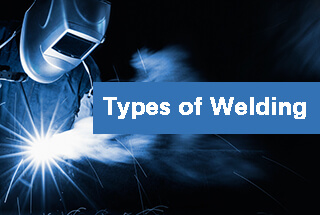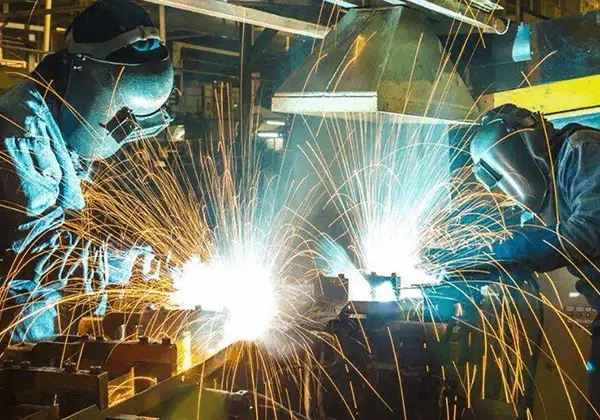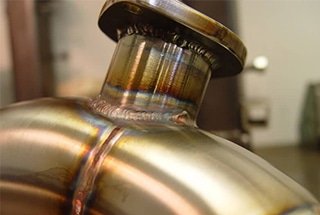1. What is Carbon Steel?
Based on its chemical composition, steel can be categorized into two main types: carbon steel and alloy steel.
Carbon steel is further divided into:
- Low Carbon Steel – with a carbon content of less than 0.25%
- Medium Carbon Steel – with a carbon content of 0.25% to 0.6%
- High Carbon Steel – with a carbon content of more than 0.6%
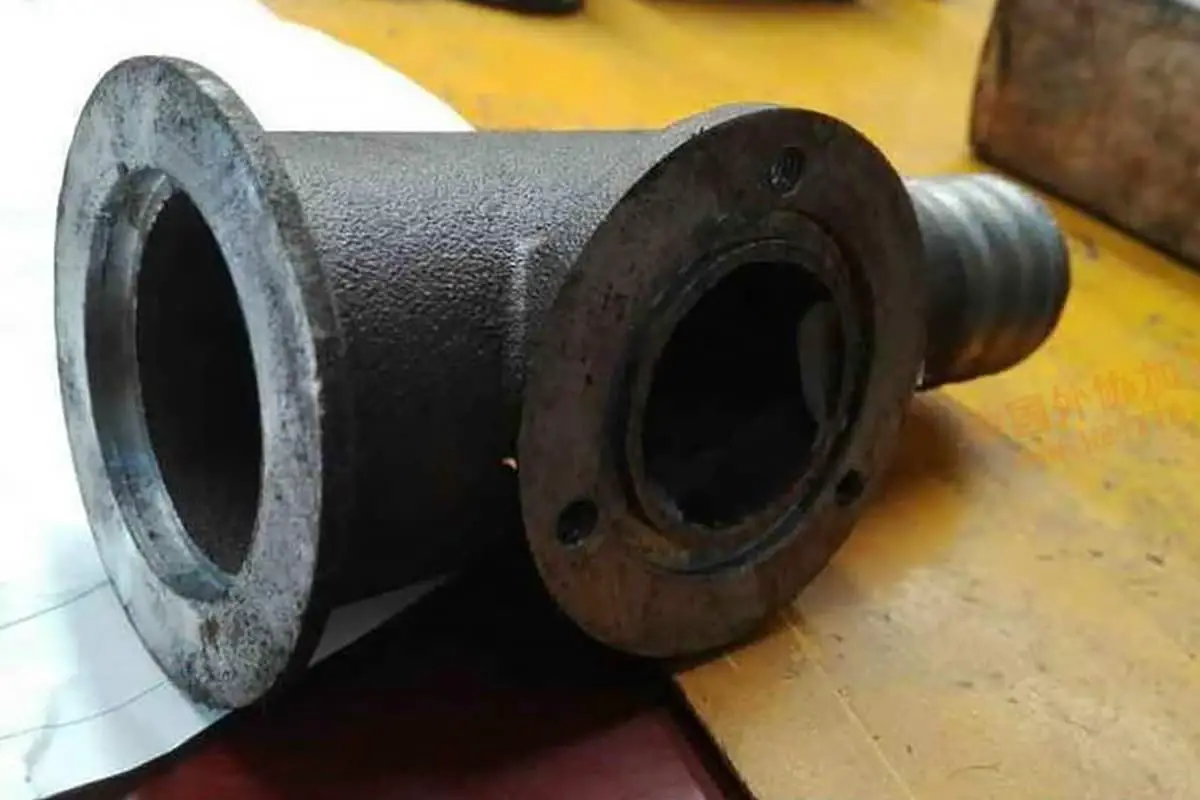
1. Low Carbon Steel
Low carbon steel, also known as mild steel, is a type of carbon steel with a carbon content of less than 0.25%. It is referred to as soft steel due to its low strength and hardness.
This category includes most ordinary carbon structural steels and a portion of high-quality carbon structural steels. It is mainly used for engineering structural components without heat treatment. Some are subjected to carburizing and other heat treatments for wear-resistant mechanical parts.
2. Medium Carbon Steel
Medium carbon steel exhibits good heat processing and cutting performance, but its weldability is poor. Its strength and hardness are higher than low carbon steel, but its plasticity and toughness are lower.
It can be used directly without heat treatment, or after heat treatment. Quenched and tempered medium carbon steel has excellent comprehensive mechanical properties. The highest achievable hardness is approximately HRC55 (HB538), with a tensile strength of 600 to 1100MPa.
Therefore, medium carbon steel is widely used at moderate strength levels, not only as building materials but also extensively in the manufacturing of various mechanical parts.
3. High Carbon Steel
High carbon steel, often referred to as tool steel, has a carbon content ranging from 0.60% to 1.70%. It can be hardened and tempered, but its weldability is poor.
Tools such as hammers and crowbars are made from steel with a carbon content of 0.75%; cutting tools like drill bits, taps, and reamers are made from steel with a carbon content of 0.90% to 1.00%.
2. Comparison of Weldability between Low Carbon Steel and High Carbon Steel
The weldability of steel mainly depends on its chemical composition, with carbon being the most influential element.
In other words, the carbon content determines the weldability of the metal. Most other alloy elements in steel also hinder welding, but their impact is generally much less significant than carbon.
Low carbon steel generally has good weldability and does not require special process measures.
However, when working with thick plates, low temperatures, or high demands, it is necessary to weld with alkaline electrodes and perform adequate preheating.
When the carbon and sulfur content in low carbon steel is near the upper limit, not only high-quality low-hydrogen electrodes and preheating and post-heating measures should be used, but the groove form should also be appropriately selected, and the fusion ratio should be reduced to prevent hot cracking.
Medium carbon steel tends to develop cold cracks when welded. The higher the carbon content, the greater the tendency for hardening in the heat-affected zone and the higher the likelihood of cold cracking, leading to poorer weldability.
As the carbon content in the base material increases, the carbon content in the weld metal also increases. Combined with the adverse effect of sulfur, hot cracks can easily form in the weld.
Therefore, when welding medium carbon steel, electrodes with good crack resistance should be used, and measures such as preheating and post-heating should be taken to reduce the tendency of cracking.
During the welding of high carbon steel, due to its high carbon content, significant welding stress is produced. The heat-affected zone tends to harden and develop cold cracks, and the weld is more prone to hot cracking.
High carbon steel is more likely to develop hot cracks than medium carbon steel during welding, making it the worst in terms of weldability.
Therefore, it is generally not used in welding structures and is only used for repair welding or surfacing of castings. After welding, the weldment should be tempered to eliminate stress, stabilize the structure, prevent cracking, and improve the performance of the weld.
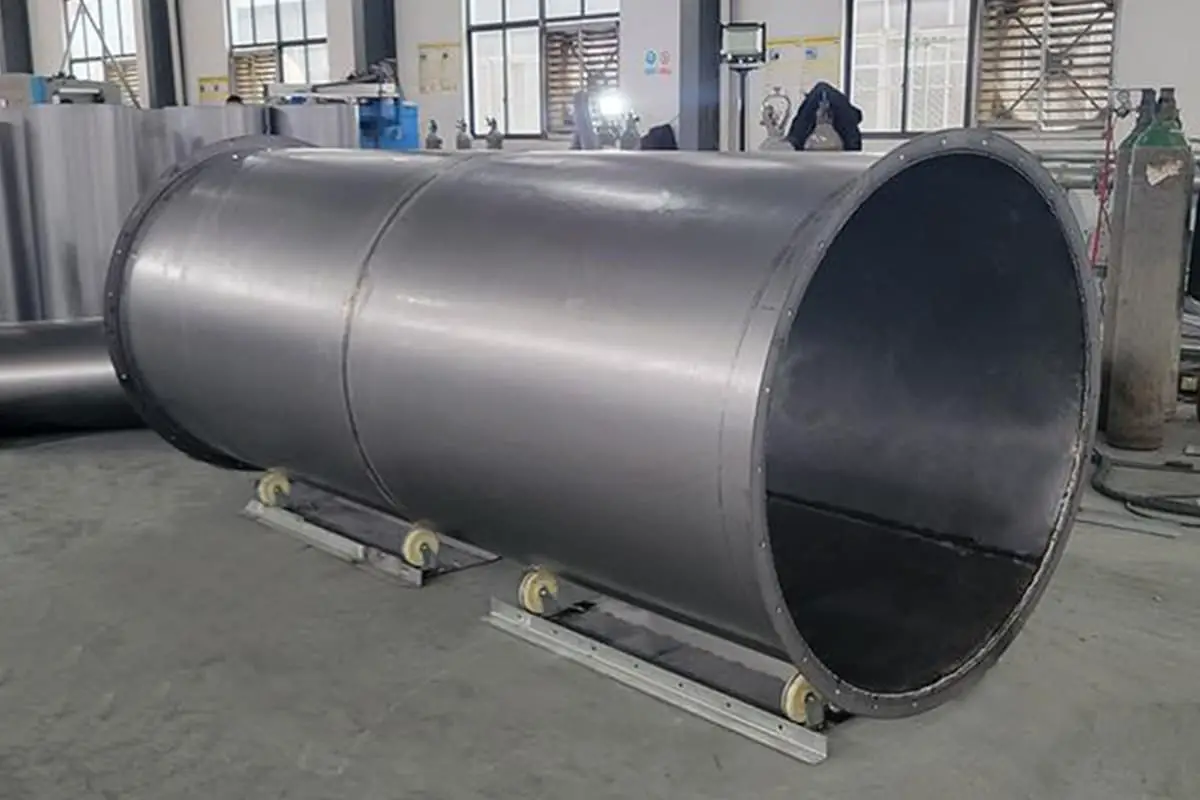
3. Medium Carbon Steel Welding
Medium carbon steel refers to carbon steel with a carbon content of 0.25% to 0.60%, which includes high-quality carbon structural steel grades such as 30, 35, 45, 50, 55 and cast carbon steel grades such as ZG230-450, ZG270-500, ZG310-570, and ZG340-640.
Due to the higher carbon content in medium carbon steel compared to low carbon steel, its weldability is inferior. When the mass fraction of carbon is close to 0.30% and the manganese content is not high, the weldability is still good, but as the carbon content increases, the weldability gradually worsens.
When the mass fraction of carbon reaches about 0.50%, the weldability significantly worsens.
(1) Common Problems in Welding Medium Carbon Steel
The problems that can occur when welding medium carbon steel are as follows:
- Cold cracking issue
Due to the high carbon content in the steel, the heat-affected zone can easily produce hard and brittle martensite structure during welding, thereby leading to cold cracks.
If improper welding materials are used or the welding process is not rightly formulated, cold cracks can also easily occur in the weld.
- Hot cracking issue
During welding, the high carbon parent material will melt and introduce carbon into the weld, thereby increasing the carbon content in the welding. Carbon can intensify the effect of sulfur and phosphorus in metals to cause hot cracks.
Therefore, when welding medium carbon steel, hot cracks can easily occur in the weld. This is especially true when the sulfur and phosphorus content in the parent material or welding material are not strictly controlled, making hot cracks more likely to occur.
Additionally, the high carbon content in the steel can also increase the tendency of the weld to produce CO gas pores.
(2) Medium Carbon Steel Welding Techniques
Due to the propensity of medium carbon steel to form defects such as cold and hot cracks when welded, special technical measures need to be implemented to ensure successful welding.
- Welding Methods
Various arc welding methods can be employed for medium carbon steel welding. As medium carbon steel is commonly used in machine part production rather than large-scale welding structures, shielded metal arc welding is most frequently utilized.
- Welding Materials
To prevent the formation of cold and hot cracks in the weld, low-hydrogen electrodes are typically used in shielded metal arc welding. These electrodes not only maintain a low hydrogen content in the weld but also exhibit desulfurizing and dephosphorizing effects, enhancing the plasticity and toughness of the weld.
When the steel has a lower carbon content and the joint has less rigidity, rutile or basic electrodes may be used. However, rigorous technical measures should be implemented, such as minimizing the fusion ratio, strictly preheating the workpiece, and controlling the interlayer temperature.
If preheating is not possible, austenitic stainless steel electrodes, such as E308L-16 (A102), E308L-15 (A107), E309-16 (A302), E309-15 (A307), E310-16 (A402), E310-15 (A407), can be used.
- Preheating and Interlayer Temperature
Preheating is the most effective technique to prevent cracking when welding medium carbon steel. Preheating not only reduces the cooling rate of the joint, preventing the formation of martensite but also reduces welding stress and expedites hydrogen diffusion.
In most circumstances, preheating and maintaining the interlayer temperature are necessary.
The selection of preheating and interlayer temperatures depends on the carbon equivalent of the steel, the thickness of the base metal, the rigidity of the structure, and the type of electrode.
The preheating temperature can be determined through welding tests, or through the empirical formula T0=550(C-0.12)+0.4δ. In this formula, T0 represents the preheating temperature (℃), C represents the mass fraction of carbon in the base metal being welded (%), and δ represents the thickness of the steel plate (mm).
The preheating and interlayer temperatures for welding 30, 35, and 45 steel can be referenced in Table 1.
Table 1 Preheating temperature and post weld tempering temperature for carbon steel welding
| Steel Grade | Weldment thickness /mm | Operation process | Welding rod category | Note | |
| Preheating interlayer temperature /℃ | Stress relief tempering temperature /℃ | ||||
| 30 | -25 | >50 | 600-650 | Non low hydrogen type welding rod | 1. The heating range on both sides of the groove for local preheating is 150-200mm 2. During the welding process, hammering can be used to reduce welding residual stress. |
| Low hydrogen type welding rod | |||||
| 35 | 25-50 | >100 | Low hydrogen type | ||
| >150 | Non low hydrogen type | ||||
| 50-100 | >150 | Low hydrogen type | |||
| 45 | -100 | >200 | Low hydrogen type | ||
- Groove Form
The workpiece should ideally have a U or V-shaped groove to reduce the proportion of base metal melting into the weld. If repairing defects in castings, the dug-out groove should have a smooth exterior to minimize the amount of base metal that melts into the weld.
- Welding Parameters
Direct current reverse polarity power supply should be used for welding. For multi-layer welding, small diameter electrodes, low current, and slow welding speed should be used since the proportion of base metal that melts into the first layer of the weld can reach up to 30%.
- Post-weld Heat Treatment
After welding, the workpiece should ideally undergo stress-relief heat treatment immediately. This is especially important for large thickness weldments, highly rigid structures, and weldments operating under dynamic or impact loads.
The temperature for stress-relief annealing is generally between 600 and 650 degrees Celsius.
If stress-relief heat treatment cannot be conducted immediately after welding, post-heating should be performed, which involves heating slightly above the preheat temperature, with a holding time of approximately 1 hour per 10mm of thickness.

(3) Compilation of Typical Mid-Carbon Steel Welding Procedures
(I) 35 Steel and ZG270-500 Cast Carbon Steel
The mass fraction of carbon in 35 steel is 0.32% to 0.39%, and that in ZG270-500 cast carbon steel is 0.31% to 0.40%. The carbon equivalent is about 0.45%, hence the weld-ability of this type of steel is acceptable.
However, in the heat-affected zone during welding, a hard and brittle martensitic structure may form, which tends to crack. Therefore, certain technical measures should be taken when welding this type of steel.
- Selection of Welding Materials
When using electrode arc welding, if a weld seam of equal strength to the parent material is required, E5016 (J506) or E5015 (J507) welding rods can be used. If a weld seam of equal strength to the parent material is not required, E4316 (J426), E4315 (J427), E4303 (J422), E4310 (J423) etc. welding rods can be selected.
For submerged arc welding, HJ430 or HJ431 fluxes and H08MnA or H10Mn2 wires can be selected.
For slag welding, HJ430, HJ431, HJ360 fluxes and H10Mn2, H08Mn2Si, H08Mn2SiA wires can be selected.
- Preheating Temperature and Interlayer Temperature
When welding 35 steel and ZG270-500 cast steel, the typical preheating temperature and interlayer temperature for the welded parts are around 150℃. If the rigidity of the welded parts is relatively large, the preheating temperature and interlayer temperature should be increased to 200-250℃.
The heating range for local preheating is 150-200mm on both sides of the groove.
- Post-weld Heat Treatment
For welded parts with high thickness, high rigidity, or working under dynamic or impact loads, stress relief annealing should be performed immediately after welding. The annealing temperature is generally 600-650℃.
For general thickness welded parts, post-heating can be used to allow the diffusion of hydrogen to escape.
The post-heating temperature is generally 200-350℃, and the holding time is 2-6 hours, depending on the thickness of the welded parts.
(II) 45 Steel and ZG310-570 Cast Carbon Steel
The mass fraction of carbon in 45 steel is 0.42% to 0.5%, and that in ZG310-570 cast steel is 0.41% to 0.50%. The carbon equivalent is about 0.56%. This steel has a greater tendency to harden and is prone to cracking, making its weld-ability relatively poor.
- Selection of Welding Materials
For electrode arc welding, low hydrogen welding rods should be chosen. If a weld seam of equal strength to the parent material is required, E5516-G (J556) or E5515-G (J557) welding rods can be used.
If a weld seam of equal strength to the parent material is not required, E4316 (J426), E4315 (J427), E5016 (J506), E5015 (J507), E4303 (J422), E4301 (J423) etc. welding rods can be selected.
For submerged arc welding, HJ350 or SJ101 fluxes and H08MnMoA wires can be selected.
- Selection of Welding Parameters
When welding 45 steel and ZG310-570 cast carbon steel, a smaller welding current should be chosen to reduce the fusion ratio of the weld seam and decrease the amount of carbon transitioning from the parent material to the weld seam.
- Preheating Temperature and Interlayer Temperature
For welding this type of steel, it is best to preheat the entire piece to a temperature above 200℃.
For T-joints, because they have more heat dissipation directions than butt joints, the cooling speed of the welded joint will increase, raising the tendency to produce cold cracks.
Therefore, the preheating temperature should be appropriately increased to 250-400℃, depending on the thickness of the welded parts.
The interlayer temperature should not be lower than the preheating temperature.
- Post-weld Heat Treatment
After welding, the welded parts should immediately undergo stress relief annealing. The annealing temperature is 600-650℃.
